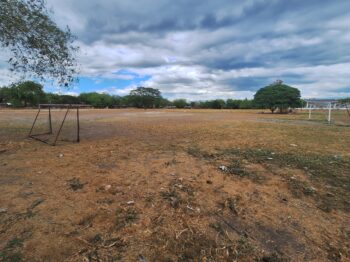
NAAWAN, Misamis Oriental (MindaNews / 31 May) — The aim to reach herd immunity in the National Capital Region Plus bubble area by the end of 2021 and the whole archipelago by the end of 2022 is risked not just by the inefficiency and slow pace of the vaccine rollout and the uncertainty of vaccine supply but also, gravely, by the unwillingness of a large slice of the population to get inoculated. In the February-March 2021 Pulse Asia, six out of every 10 Filipinos do not want, accordingly, to be vaccinated.
The Department of Health (DOH) has lately observed that many senior citizens did not turn up during their scheduled second dose Jab. Accordingly, those who are hesitant to get the jab or to complete it most likely belonged to Class D and E of the population. This class judgment is not totally correct because vaccine hesitancy also infected the educated upper class, even some medical professionals, which may explain why after three months since the launch of the vaccination program, a good number, reportedly 15 % of medical frontliners, who are the No. 1 in the priority list, has remained unvaccinated.
There are varied reasons for vaccine hesitancy, foremost of which is fear or distrust of the current COVID-19 vaccines, reinforced primarily by rampant misinformation and falsehoods passed by word-of-mouth, and conspiracy theories spread online about vaccines.
The DOH entertains the idea of providing incentives, like giving rice and food stuffs, to attract more people to vaccination, especially in depressed communities. Many of the local government units in the NCR already picked up the DOH line, with some entitling those with vaccination cards discounts in some business establishments.
(But) material inducement to vaccination is superficial and unsustainable.
The success of the country’s vaccination program lies primarily in addressing vaccine hesitancy. This may be accomplished through intensive and widespread communication and information campaign tapping various channels and platforms to educate the people about the importance and benefits of vaccination to a person’s health, his livelihood and income, and to the well-being and welfare of his family and community.
There ought to be a concerted effort, too, by the government, the church and academe in debunking conspiracy theories and other falsehoods peddled everywhere.
Sadly, the country’s vaccination program has been mired by degenerative controversies before it could even take off. For instance, President Duterte, for whatever intention and gain, publicly announced that many of his soldiers had already been jabbed with Chinese-produced COVID-19 vaccine, long before the Food and Drug Administration (FDA) had allowed the entry of any vaccine to the country via emergency use authorization (EUA).
Malacanang halted the investigation on the incident, and tolerated, in effect, the anomalous and illegal vaccination of the members of the Armed Forces of the Philippines, including the Presidential Security Group and some government officials with a vaccine (Sinopharm) smuggled from China, eschewing health protocols, laws and regulations related to the campaign against the pandemic. To top it all, at the height of the vaccine rollout, the President had himself inoculated on May 3 with the controversial Sinopharm vaccine that has no EUA or imprimatur of the FDA; hence, a vaccine that had entered the country illegally with the blessing, needless to say, of the Malacañang user.
These confusing signals from the top do not inspire trust and confidence in the vaccines now in rollout. Why would the top honcho of the land use a vaccine outside those that are purportedly safe as approved by the FDA and DOH for the use of the Filipino people? This anomaly does not augur well to the country’s vaccination program. This is another dizzying challenge that communication experts need to overcome.
Meanwhile, 230,998 of the country’s population are already fully vaccinated or have completed their required vaccine doses, so say reports.
Last month, vaccine czar Carlito Galvez, Jr. said that the government is targeting to reach herd immunity this year by inoculating at least 50 to 70 million Filipinos. This is an ambitious goal that borders on daydream. So far, the vaccination campaign has reached only 0.33 percent of its target, and we’re entering now the second half of the year 2021. Unless the controversies are put to rest and no more would surface in the days to come, attaining herd immunity this year or in the next two years is but a quixotic dream.
(MindaViews is the opinion section of MindaNews. William R. Adan, Ph.D., is retired professor and former chancellor of Mindanao State University at Naawan, Misamis Oriental, Philippines.)







